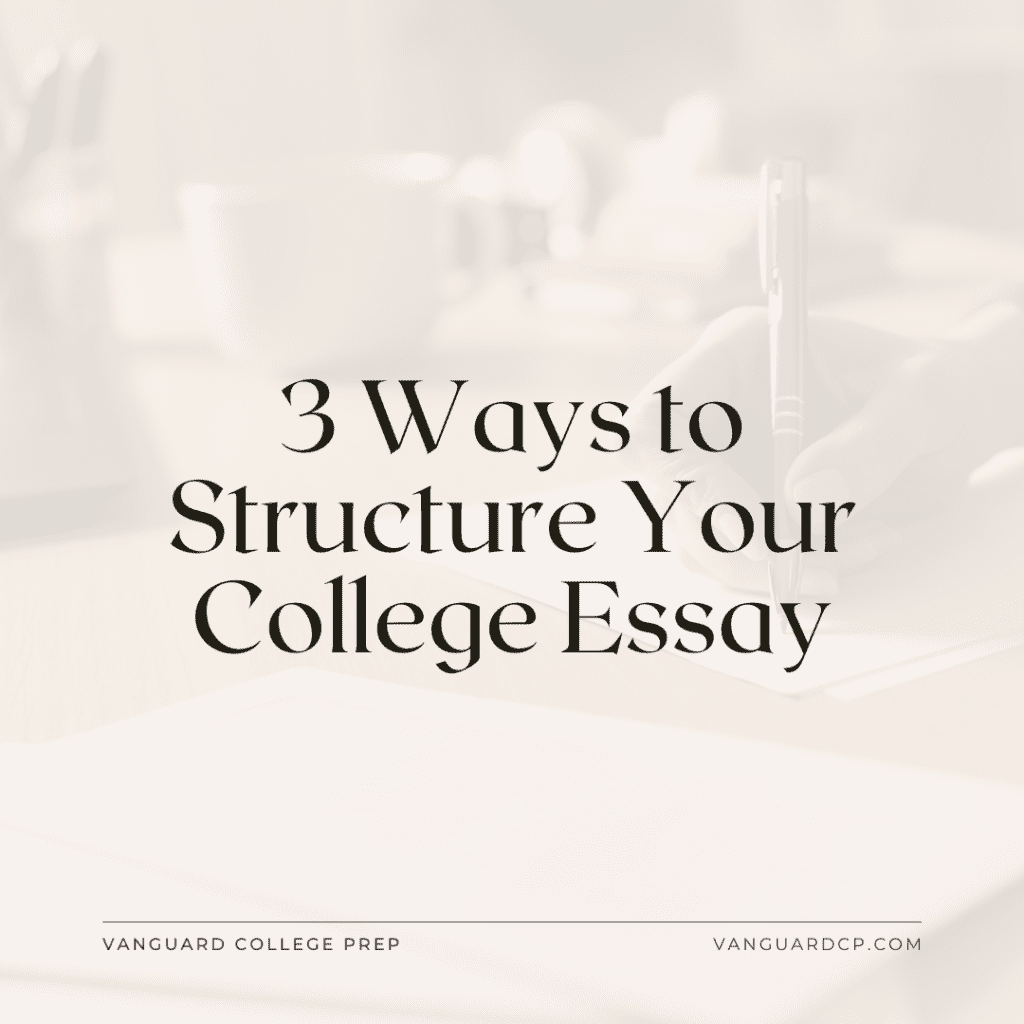- Leave a Comment
- July 6 2023
- College Applications
- By vanguard
3 Ways to Structure Your College Essay
You’ve written your Common App essay, but it’s boring. You’ve added all the details you can think of; it still isn’t right, but you’re about to give up.
Wait!
There’s one more thing you can try: changing your story structure.
Traditionally, a narrative is made up of six steps:
- Hook: a gripping scene (hero in the middle of a battle with dragon)
- Status quo: what life was like before (hero lives in a village, doesn’t want to leave, but well-known for her fighting skills)
- Inciting incident: catalyst to the journey (runs from village burned by dragon along with friends - nowhere to go, damage done by dragon is literally brought close to home)
- Raising the stakes: rising action (wild boar attacks and hurts one of the hero’s companions. Hero realizes how much is at stake if she doesn’t succeed in killing the dragon)
- Climax: completion of internal shift (accosting dragon in his lair, hero is injured - will she succeed? And how? This needs to be internal as well as external - not only does she kill the dragon, but she recognizes how important it is to protect her friends and country, even if it means going through such struggle)
- Outcome: new status quo (hero is honored by ruler, rebuilds village with reward money, goes back to her previous life - but different because she has accepted her place as defender of the realm)
Instead of a straightforward, chronological structure, try a montage or a braided essay.
Montage Structure
In a montage, the admissions officer will get to know you, or the reader will get to know the protagonist, by seeing them in a variety of snapshots.
For our hero’s story, a montage would look like this:
Intro/Status Quo: hero going about the village and greeting fellow villagers, with some side commentary about how much family/friends means to her
Raising the Stakes: running from burning village - I didn’t know what I was going to do as my life burned behind me.
Climax: fighting the dragon, side commentary about how this taught her determination and grew her fighting skills
Outcome: rebuilding the village, side commentary about resilience and how she learned to embrace both sides of her personality - the warrior and the caretaker
Three or four snapshots is enough; you don’t want to put in so many that you can’t develop them fully within the word count. The key here is that all of your snapshots or anecdotes need to be gripping and descriptive with good transitions- otherwise your essay will seem disjointed and uninteresting.
Braided Structure
A braided essay provides depth to your topic by showing two ways of finding the same conclusion.
In the case of our hero, a braided essay would keep our original plot of living in a village, being called to fight a dragon, village burning down, etc. except it would intersperse it with another theme.Maybe in this case, the hero remembers planting a garden with her father, and how long it took for the plants to grow, and that gives us, the readers, a framework to place her experience fighting the dragon on - to understand the depth of how she feels about it. She doesn’t want to kill, but she recognizes it is necessary for the well-being of her village.
Hook: dragon burning village
Flashback: watching the plants grow from seeds in the garden, dad teaching that the weeds had to be rooted out to help the vegetables and flowers grow
Status Quo: she didn’t want to kill a living thing, but when she ran from her village she saw that humans and dragons couldn’t live in harmony
Flashback: she didn’t pull up all the weeds, and thorns grew up around the squash - when she tried to pick the squash, she tore her skin on the brambles and ran to dad
Climax: battle with dragon - will she succeed? Will she kill or subdue?
Outcome: dragon is dead, just like her dad painstakingly tore up the flowering brambles so she could get the squash their poor family desperately needed. Rebuilding the village, she plants squash.
Just like with the montage, you don’t want too many extra scenes. I’ve cut a bit from the original and the flashbacks will stay very short.
The structure that works best for your essay will depend on the content of your essay; if you have a lot to say about yourself, maybe you do a montage structure. If your focus is a chronological story of personal change, you can stick with the good ol’ three-act story structure. And if you have two similar stories that go together, a braided structure would be the best choice. Now go restructure your essay!
Hillary K.
Essay Specialist
University of Virginia
Need help with your college essays? Find out more about our essay coaching services here!



Leave Your Comment